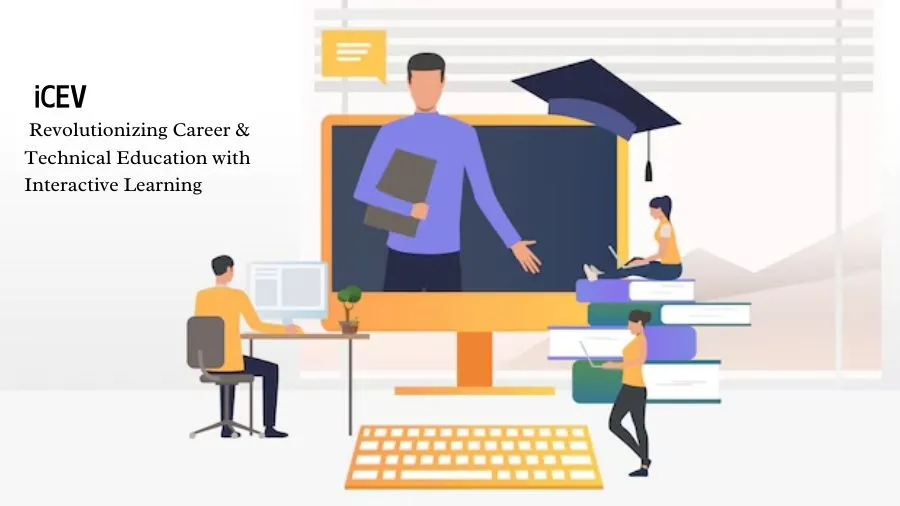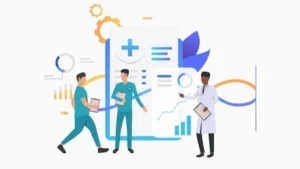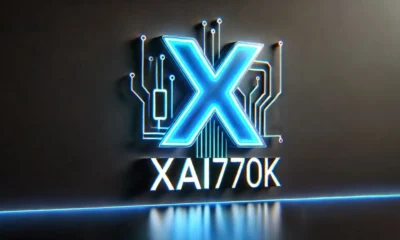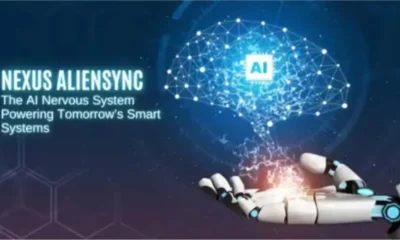EDUCATION
iCEV: Revolutionizing Career & Technical Education with Interactive Learning

Career and Technical Education offers students real-time skills in various industries. Over the years, it has evolved to meet the needs of the workforce. In this new digital era, learning has become interactive, meaning that the traditional ways of teaching are not solely effective. Online applications now provide hands-on experiences that enhance students’ abilities to develop their skills. iCEV has embraced this shift by offering relevant, industry-focused content intended to prepare students for careers. Its courses cover agriculture, business, and health science, among others. Its integration of technology makes learning accessible and practical. Educators teach relevant skills efficiently by using them. Students learn interactively and gain expertise. iCEV has continued to advance CTE into the future and bridge the gap between education and industry needs. iCEV is an interactive learning company with a long-standing history.
Understanding iCEV
It was founded to improve education through technology. It has expanded its reach and influence over time. Its purpose is to deliver quality, career-oriented education. The company aligns with the industry’s current trends, enabling students to acquire the most relevant skills. iCEV’s vision is to equip learners with real-world knowledge. Significant milestones include digital advancements and key industry partnerships. It has developed a robust online platform featuring diverse courses. These programs align with workforce expectations and certifications. iCEV collaborates with industry leaders to ensure that the content is accurate. Its resources assist educators in preparing students for future careers. The company remains committed to innovation in CTE.
The Importance of Interactive Learning in CTE
Interactive learning aids in Career and Technical Education. This makes lessons engaging. Practical skills are obtained by students through hands-on experience in such a process. Traditional teaching does not allow for active participation in the learning process. Interactive learning methods utilize videos, simulations, and real-life applications to convey concepts. In this approach, student involvement improves alongside knowledge retention. Lectures and textbooks are forms of traditional learning. Interactive methods provide dynamic learning environments that keep students motivated. Additionally, they encourage more problem-solving and critical thinking. Studies demonstrate that students learn effectively when they engage with the content. iCEV captures this shift by offering innovative, technology-based learning tools. Its interactive platform supports educators by providing resources to teach effectively. The implementation of interactive learning is, therefore, guaranteed to make students career-ready. iCEV has a diverse curriculum that can be applied to various careers
iCEV’s Comprehensive Curriculum Offerings
Agriculture, business, health science, and STEM—all these subjects are included in the curriculum. All these courses comply with industry standards and certifications. This equips students with relevant job skills. The curriculum is developed with input from industry experts. Certifications from ASE, AWS, ASK, and others authenticate students’ skills in those areas. iCEV’s flexible learning format can be tailored to accommodate various teaching styles. Educators can customize lessons to meet their students’ needs. The platform allows for self-paced learning, enabling students to study at their own pace. Online access facilitates integration into classrooms or remote settings. Teachers value structured lesson plans and assessment tools. iCEV’s curriculum is regularly updated to meet evolving industry requirements. With flexible, industry-specific education, iCEV empowers students to excel in competitive job markets.
Business, Marketing, Finance, IT & Media
Courses offered by iCEV are as follows: courses in business, marketing, finance, IT, and media. Students acquire core skills in entrepreneurship and business management. Topics discussed include business planning, leadership, and strategic decision-making. You can explore branding, social media, and online advertising under digital marketing. Media literacy teaches the creation and analysis of digital content effectively. Financial literacy courses focus on budgeting, investing, and accounting principles. These skills will prepare students for careers in business and finance. IT courses cover topics in cybersecurity, coding, and software applications. Students are exposed to real-world business scenarios and receive hands-on experience. Each course is designed to meet industry standards and certifications. Educators use interactive tools to enhance learning and engagement. iCEV’s curriculum prepares students for today’s digital economy and future careers. Career exploration helps students identify their interests and potential career paths.
Career Exploration
iCEV offers self-assessment and career planning tools. Learners discover strengths and skills through interactive activities. The curriculum exposes learners to various industries and professions. They explore potential opportunities in healthcare, business, technology, and much more. Career counseling assists students in making important decisions about their futures. Resources available to them include educational pathways—college and technical training. Learners gain an understanding of certification programs and job requirements. Hands-on experiences and industry insights prepare them for real-world careers. Interactive lessons keep students engaged in career exploration. iCEV bridges the gap between education and workforce readiness. Its career exploration tools empower students to plan successful futures.
Health Science
iCEV’s health science curriculum prepares students for careers in healthcare. Courses cover medical terminology, anatomy, and physiology. Students learn essential patient care and clinical skills. Interactive lessons teach procedures such as vital sign monitoring and infection control. The program also prepares students for healthcare certifications. Certifications help students qualify for entry-level medical positions. Industry-aligned content ensures students meet professional standards. Real-world case studies enhance critical thinking and decision-making. The curriculum supports future nurses, medical assistants, and healthcare professionals. iCEV equips students with knowledge and hands-on experience for medical careers.

Law, Public Safety, Corrections & Security
iCEV provides an in-depth look at the criminal justice system. Courses cover law enforcement, court procedures, and corrections. Students learn emergency response techniques, including CPR and first aid. Training includes crime scene investigation and public safety protocols. Ethical and legal considerations are key focuses. Lessons explore laws, regulations, and moral responsibilities in public safety. Real-world scenarios prepare students for law enforcement careers. The curriculum aligns with industry standards and certifications. iCEV helps students build foundational skills for careers in law and security.
Success Stories and Case Studies
iCEV is changing the dynamics of learning based on various success stories from schools and institutions that have adapted their curriculum for maximum student participation and skill enhancement. Students completing such courses attain certification in related fields, improving access to various employment opportunities across different industries. Numerous schools testify to improved student abilities, allowing them to become competent in specific vocational fields and enhancing their employment outcomes within healthcare, business, and technology. Furthermore, educators commend iCEV for enabling students to grasp challenging subjects more easily. Institutions appreciate its alignment with workforce needs. Testimonials highlight how it has led to adequate career development preparation.
The Future of CTE with iCEV
iCEV continues to define futures by equipping students with real-world skills and evolving to meet the demands of modern industries. Courses on emerging technologies and jobs are lined up in the pipeline. The platform will expand to include AI, cybersecurity, and renewable energy. By helping to fill the skills gap in industries, iCEV updates workforce skills and ensures student relevance while maximizing the effectiveness of curricula in engaging and productive ways. With greater incorporation of recent tools in teaching and learning, it continually offers excellence-driven futures for education amid shifts in tomorrow’s careers as industry dynamics evolve.
Conclusion
iCEV has significantly impacted Career and Technical Education by offering innovative, industry-aligned learning solutions. The interactive curriculum helps build real-world skills in students, making them better prepared for future careers. Schools report increased engagement, retention, and job readiness through the use of iCEV. The adaptability ensures high-quality, relevant education. iCEV is encouraging Educators to embrace interactive learning opportunities that ensure student success. They can create dynamic and effective classrooms through the integration of technology. Industries are changing with time, so CTE should also adapt to meet these requirements. iCEV continues its commitment to innovation, shaping the future of technical education and empowering the next generation of professionals.
-

 BIOGRAPHY7 months ago
BIOGRAPHY7 months agoBehind the Scenes with Sandra Orlow: An Exclusive Interview
-

 HOME1 year ago
HOME1 year agoDiscovering Insights: A Deep Dive into the //vital-mag.net blog
-

 HOME1 year ago
HOME1 year agoSifangds in Action: Real-Life Applications and Success Stories
-

 BIOGRAPHY1 year ago
BIOGRAPHY1 year agoThe Woman Behind the Comedian: Meet Andrew Santino Wife




























